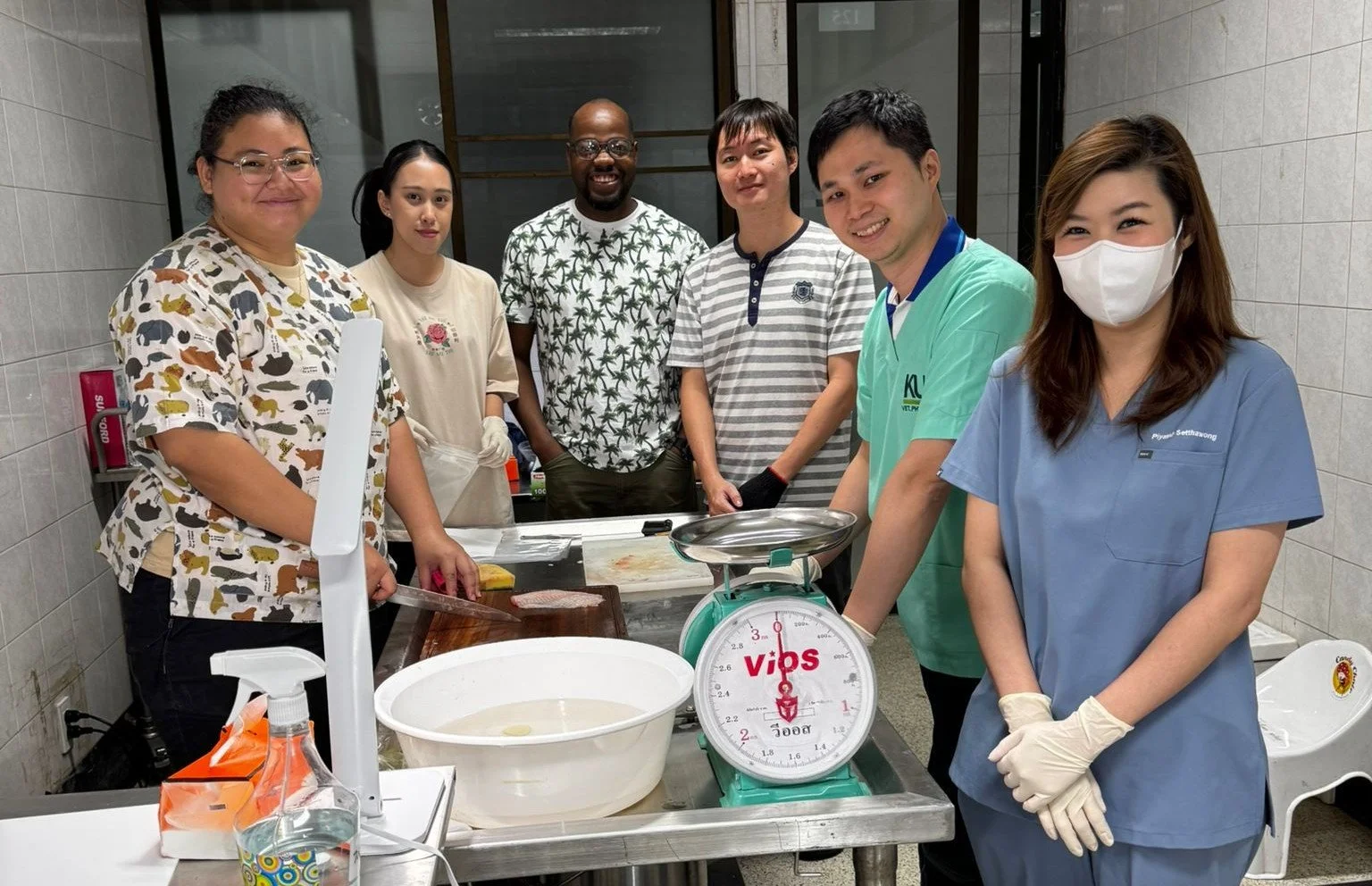Hello again, everyone. I'm Arnan Hirunratanakorn, and I am currently working on a project funded by Open Philanthropy. The project is titled "Fish Slaughtering Welfare: Assessing Slaughtering Techniques in Tilapia for Welfare Indicators and Meat Quality Indices" and is led by Kasetsart University in Thailand. The goal is to study how different stunning methods affect the welfare of tilapia and the quality of their fillets. The research includes six stunning methods: Percussive stunning (priest), ikijime, bolt pistol, anesthetized, live freezing, and asphyxiation. In addition to studying these methods in laboratory conditions, we will also conduct a market study to understand how fishmongers perceive fish welfare and whether the experimental methods can be applied in real market conditions.
Assessment of stunning methods: To compare the effect of different stunning methods we examined several parameters such as muscle pH, lactic acid concentration, and ATP levels at different times after slaughter. We also measured fillet colour, drip loss, and texture over several days post slaughter. Additionally, proximate analysis was conducted one day after slaughter. For the rigor index, fish were monitored daily for 15 days.
Fillets stored at 4ºC for further analysis
Our findings show that anesthetization rendered the fish fully unconscious with no morphological damage. Bolt pistol stunning was also effective, making the fish unconscious immediately, though it caused damage at the point of impact. The Priest method was similarly effective but caused slight damage to different parts of the body, and it sometimes required a second application to fully render the fish unconscious. Ikijime was less reliable to immediately render the fish unconscious. Asphyxiation and live freezing were considered poor welfare practice, as fish remained fully conscious for a long period, with haemorrhage across their bodies.
Fish with haemorrhage after asphyxiation
Regarding inital product quality findings, ikijime and bolt pistol had lighter-coloured fillets than other groups in the early days of storage, while at later days of storage, live freezing and ikijime were lightest. In terms of texture, filets from asphyxiated fish were firmer than other groups after slaughter, but becoming softer than other groups by day 7. Rigor mortis set-in faster for live freezing and asphyxiation, indicating high pre-slaughter stress. Rigor in the asphyxiated group was also released earlier than other groups. Water drip loss and proximate composition were similar among methods.
Measurement of fillets colour
Market perception: We will soonbegin the market survey with fishmongers. First, we will interview them about their current slaughtering practices and their awareness of fish welfare. Then, demonstrate experimental stunning methods on the fish and conduct a post-demonstration interview to understand their perceptions of fish welfare and whether they think these methods could be used in markets.
Thank you for reading. If you have any questions or would like to discuss further, please email me at arh00062@students.stir.ac.uk




